An archetypal French breakfast
I arrived in Beaulieu-sur-Dordogne earlier than I’d planned, so my first stop was a bakery just outside the medieval center of town. There was still a morning chill in the shade when I took my pain au chocolate to a bench in the little square, but from the first bite I knew this was a town I was going to like – the bread was still warm, the two bars of dark chocolate were still melted inside, the crust flaked off in sheets for the birds around my bench to enjoy… it was the archetypically perfect French breakfast for me.
(That may be because there’s so much competition. For a small town (around 1,200 people) there are a surprising number of bakeries concentrated around the centre ville, and all of them were busy at that hour of the morning.)
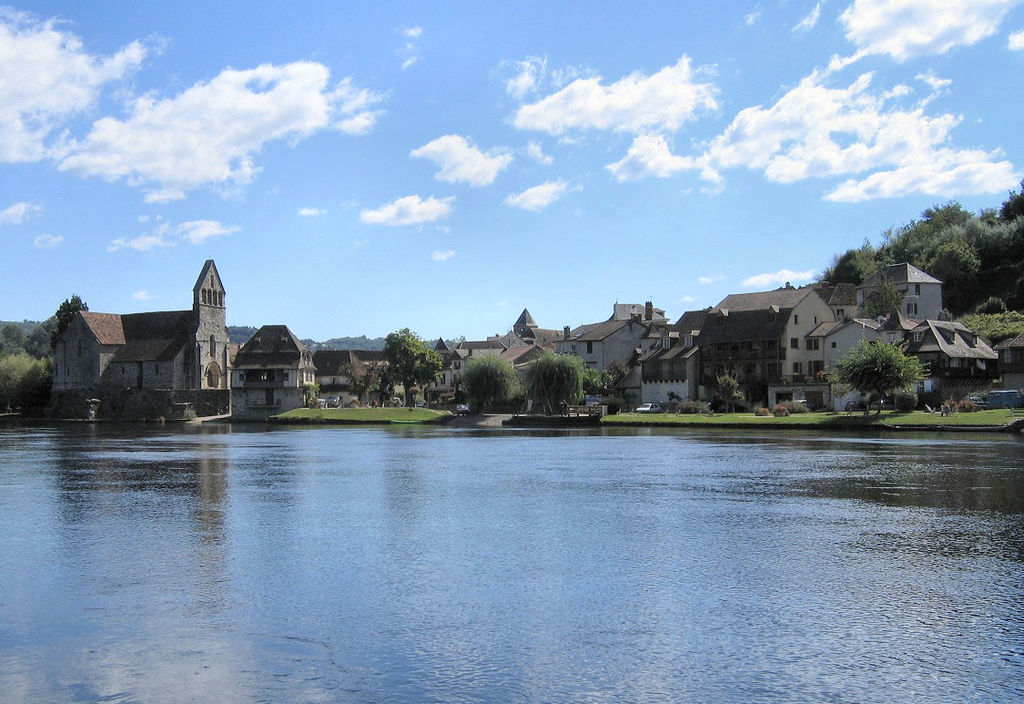
via Wikimedia Commons
One of 22 “pretty places” in France
In any case, as I sat enjoying my bread and a bottle of orange juice, I had time to reflect on the prosaic name of Beaulieu-sur-Dordogne. Just as there are at least 86 towns in France with some variation of the name Villeneuve, there are 22 that share the name Beaulieu – “pretty place” in French. Many of them have some kind of qualifier – Beaulieu-en-Argonne, Beaulieu-les-Fontaines Beaulieu-sur-Loire, and so on. There’s even an “Alliance of Beaulieus of France”, formed in 1999 and dedicated to developing “a spirit of friendship and mutual aid” among the communities that share the name.
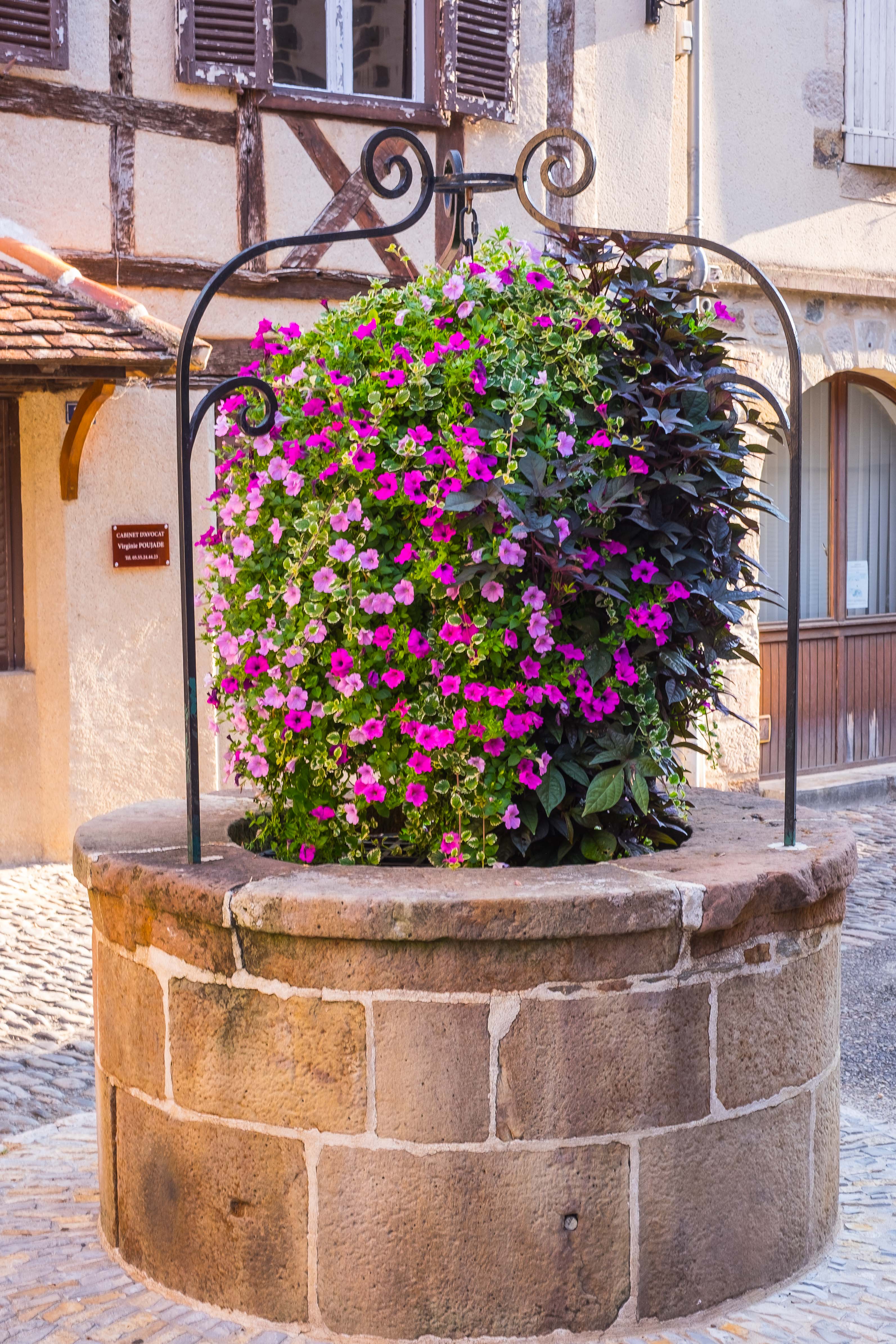
(This kind of naming convention interests me because I live in a town called Greenville in the U.S. – and there are more than 30 of those around the country, although some of them are “green” only in their wishful imaginations. Perhaps even more interesting, the people in each of France’s “Beaulieus” call themselves different names – here along the Dordogne they are “Bellocois”, while in Hérault they are “Beaulieurois” and in the Puy-de-Dome they call themselves “Béliquieres”!)
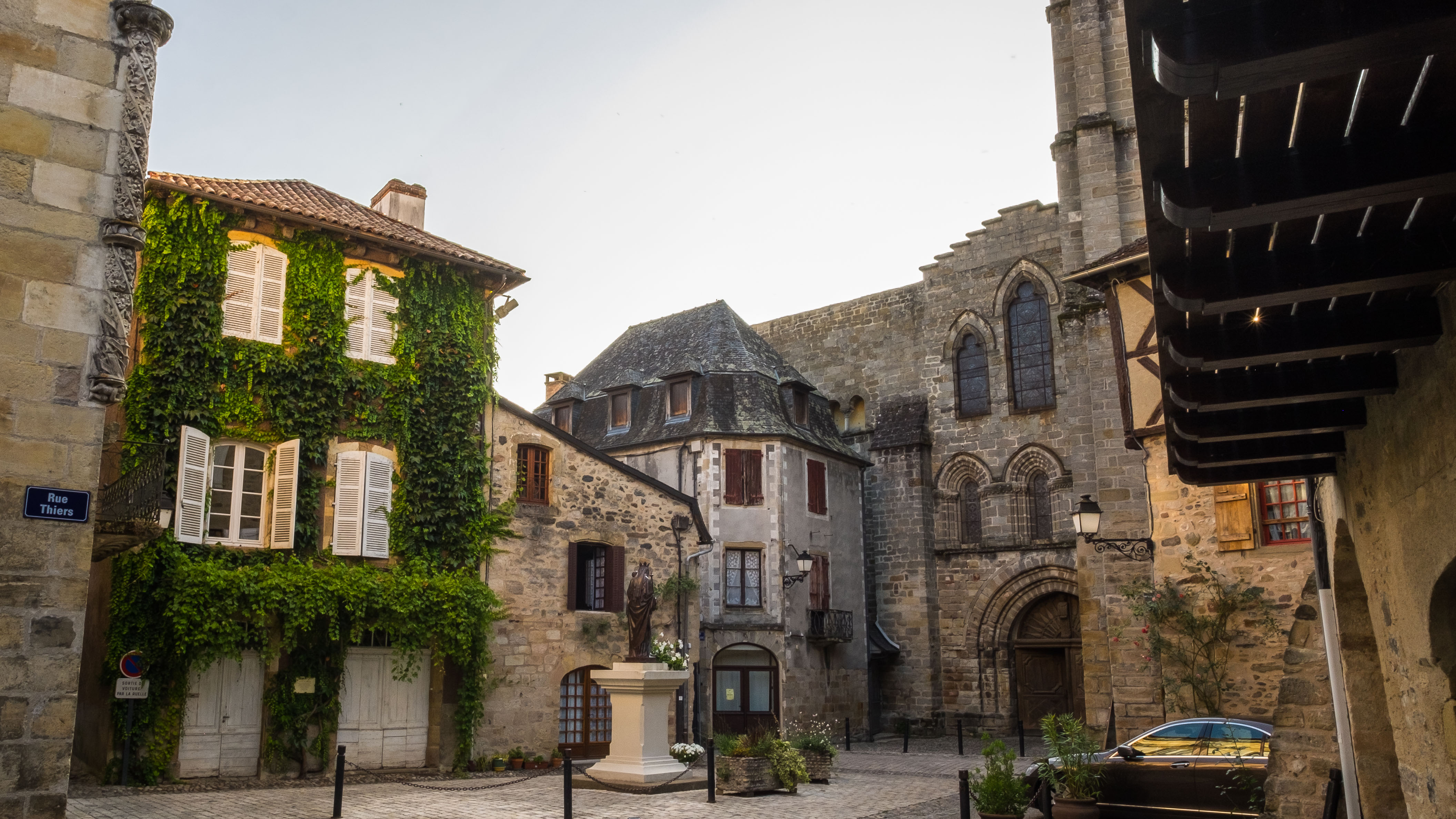
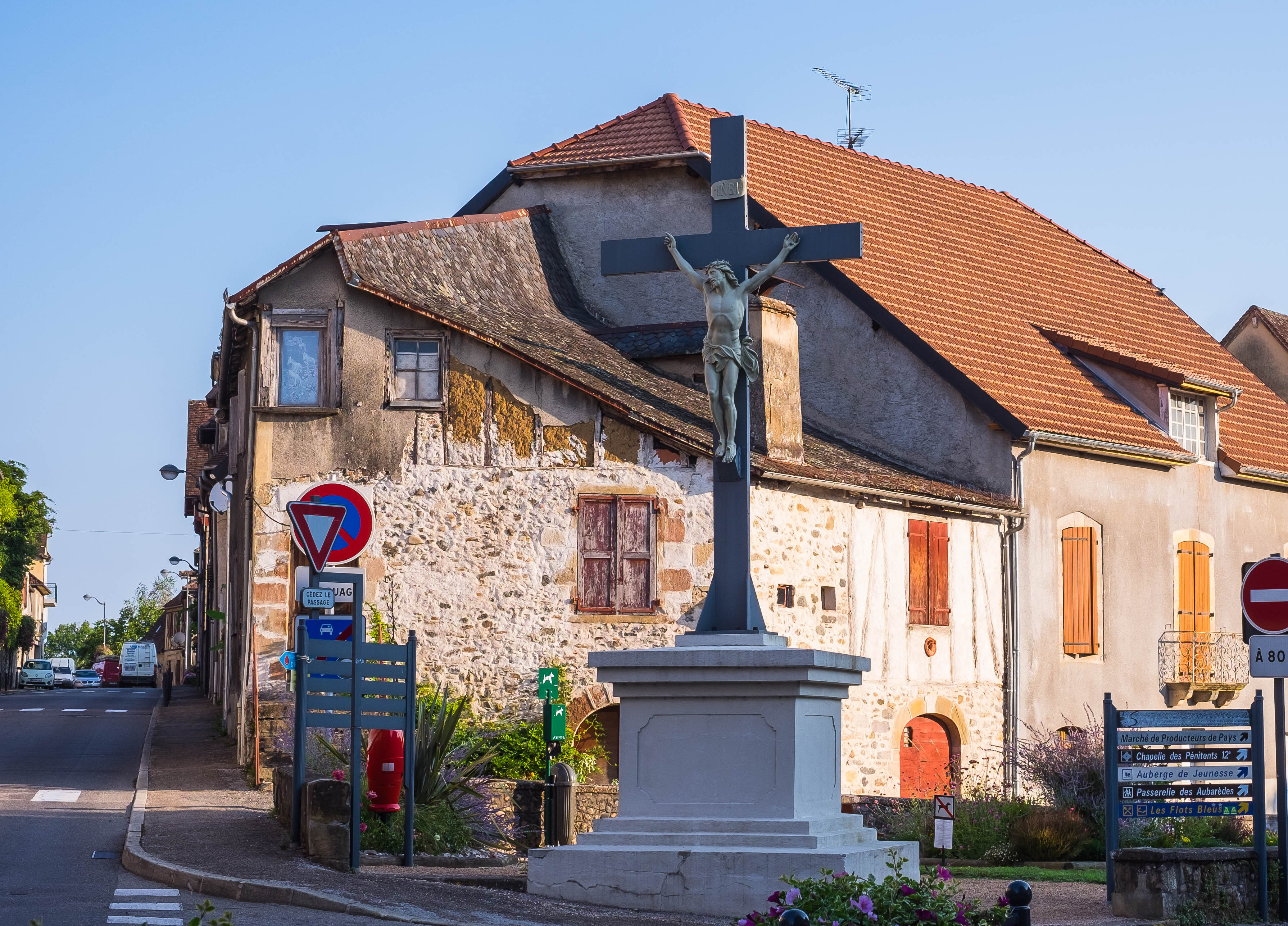
The “Riviera of the Limousin” – and a 26-foot strawberry pie
When you look at the map showing the situation of all these towns, it’s evident that most of them are clustered in a band running east and west through the Loire River valley – so it’s not surprising that people looked at their surroundings and thought, “well, this is a pretty place – let’s call it that!” That’s true for Beaulieu-sur-Dordogne, too. Further south than most of the other towns with similar names, it enjoys a beautiful spot on a bend of the Dordogne River in the Corrèze departement. It is indeed a “pretty place”, and it is indeed on the right bank of the Dordogne, so the name is precise and descriptive.
It seems to me a little less precise to call Beaulieu-sur-Dordogne “the Riviera of the Limousin”, but in fact they do -- mostly because of its mild climate and its reputation as a leading producer of fresh strawberries (they advertise a Strawberry Festival every May featuring a 900 kg, 8-meter-wide pie).
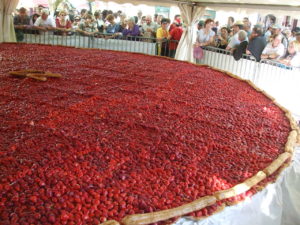
A shared history of war
If you know the history of other parts of southwest France, you already know the capsule version of this town’s history because it echoes the history of so many other towns: establishment of an outpost of the great Abbey of Cluny, a pleasant stopping place for pilgrims on the Route to Saint James of Compostella… and then came the long decades that stretched into centuries of war. As the community became prosperous in the 12th century, it attracted the jealous attention of the powerful Viscount of Turenne and battles were fought trying to gain control of the area. The Hundred Years’ War wracked the region in the 14th and 15th centuries, as did France’s Wars of Religion in the 16th century C.E. Two times in five years (between 1569 and 1574), Beaulieu-sur-Dordogne was sacked by Protestant armies and its great abbey church was turned into a Protestant temple; the Catholic League took it back and restored it as a monastery beginning in 1622.
But the memory of war does not all go that far back in time, either. I found this plaque nestled in the ivy on the side of a building in the main square. It says:
“Here, from 1939 to 1944, at Beaulieu-sur-Dordogne, children from the occupied zones and refugees to the “Colony de Verrière” [a house in town where 70 Jewish girls were hidden away] were saved from deportation and massacre, organized by the Éclaireurs Israélites de France [a Jewish youth scouting group] and directed by Mr. and Mrs. Gordin, thanks to the help and devotion of many Beaulieu residents, including Adrienne Laquièze, one of the ‘Juste Parmi les Nations’.”
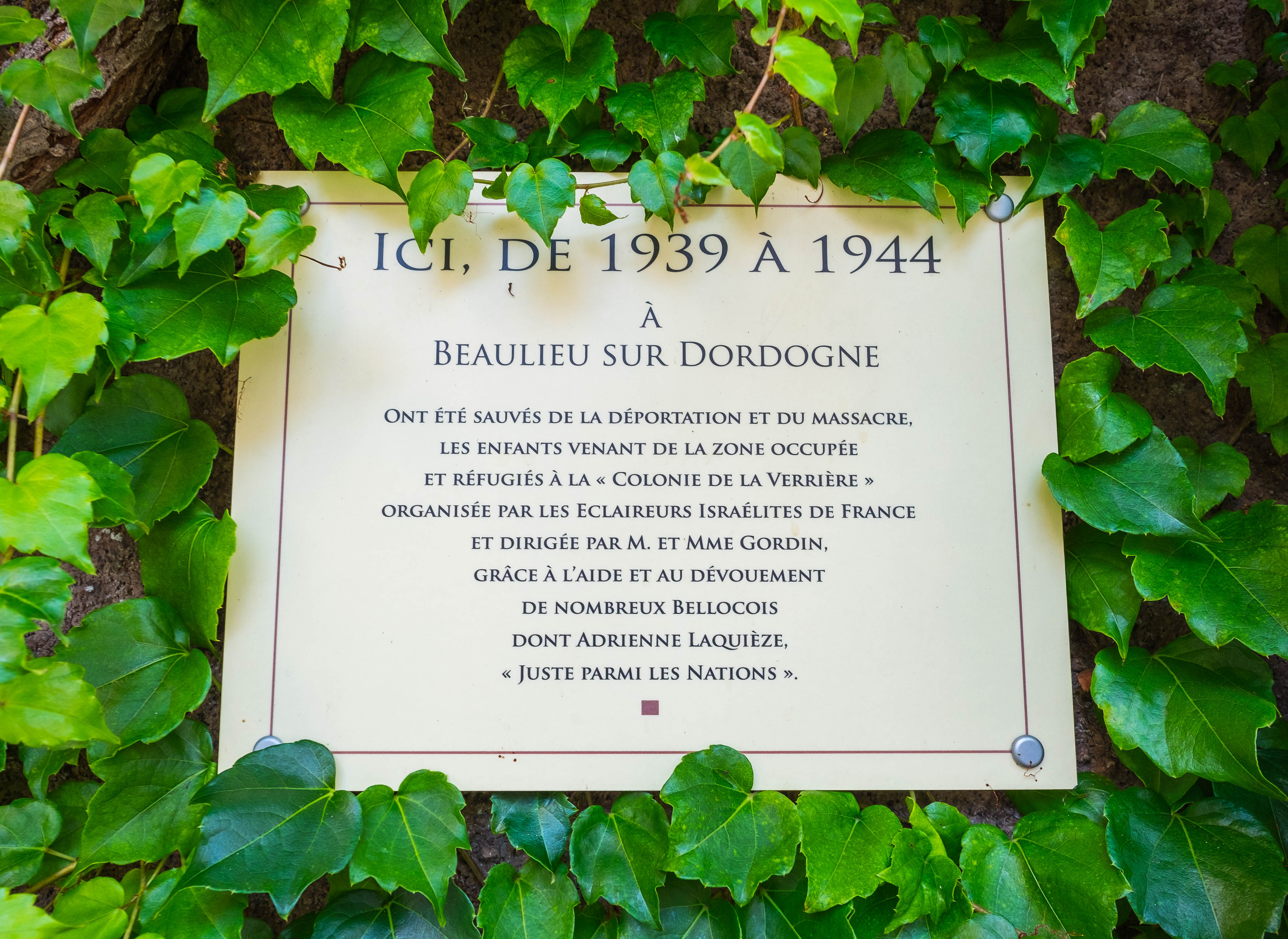
That’s a phrase I’ve seen elsewhere in this part of France – the “Juste Parmi les Nations” (“The Righteous Among the Nations”) . As I understand it, it’s a solemn honorific given by the state of Israel to recognize the work of non-Jews who acted during World War II to save Jewish people threatened by the Nazi regime. In this case, the honor is due to Adrienne Laquièze, a local restaurant owner in Beaulieu-sur-Dordogne who helped hide 70 Jewish girls escaping the German occupation of Paris; she eventually helped many of them get to safety in Switzerland. The plaque served as a reminder, as it does everywhere else I’ve seen it, of how recent and raw the war can seem, even in remote corners of France.
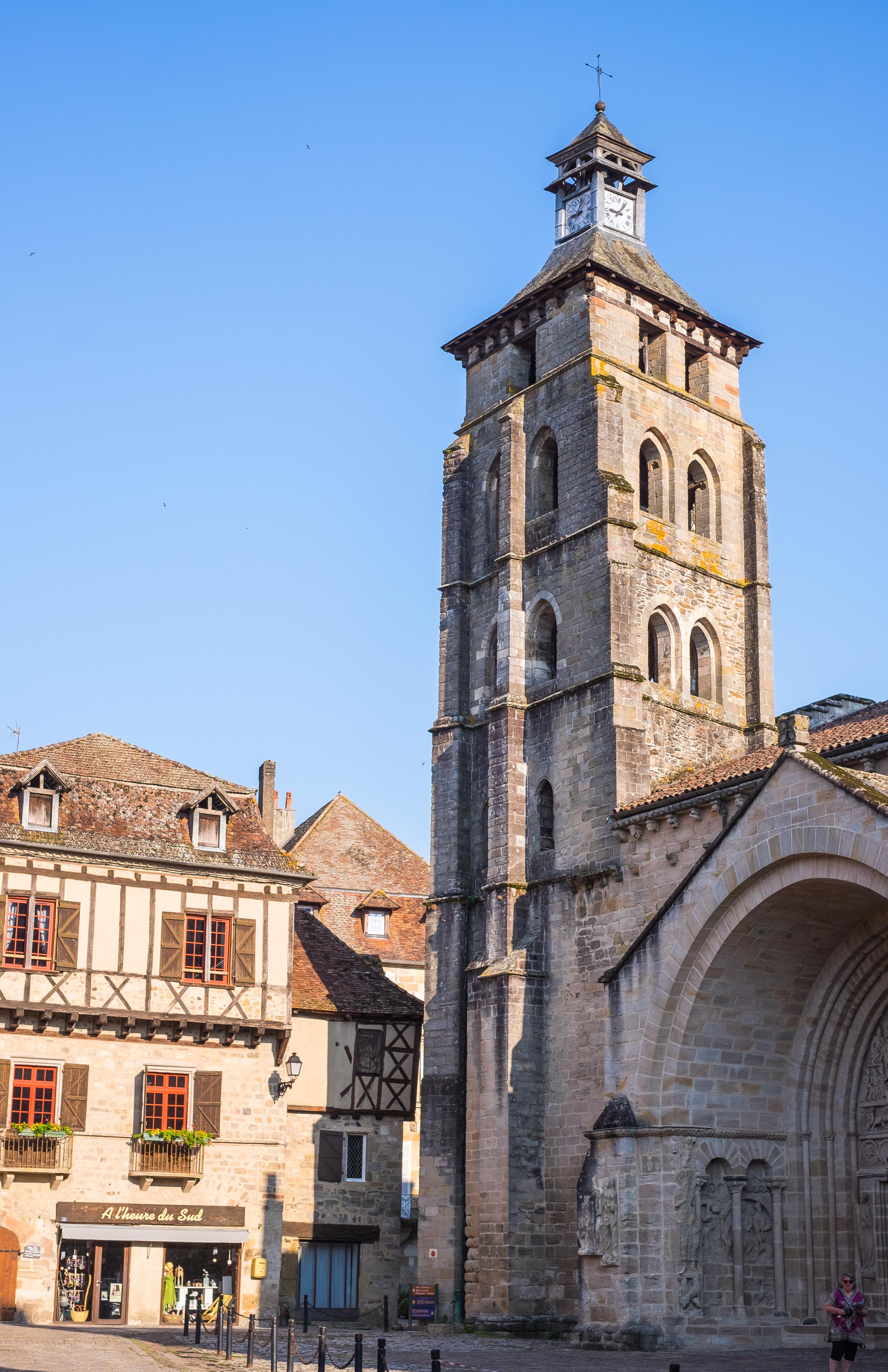
A great abbey church – and an erotic version of the story of Eve
The beautiful abbey church of St Pierre is a good place to start your tour of the medieval quarter of Beaulieu-sur-Dordogne. Started in 1100 C.E., it wasn’t completed until the 1300s, and it’s one of the finest examples of simple Romanesque architecture I’ve seen in this corner of France. (It’s not entirely typical, though – a couple of the altar pieces are covered in gold leaf and somewhat gaudy, more what you’d expect to see in a Baroque church in Portugal than in an austere old monastic church like this.)
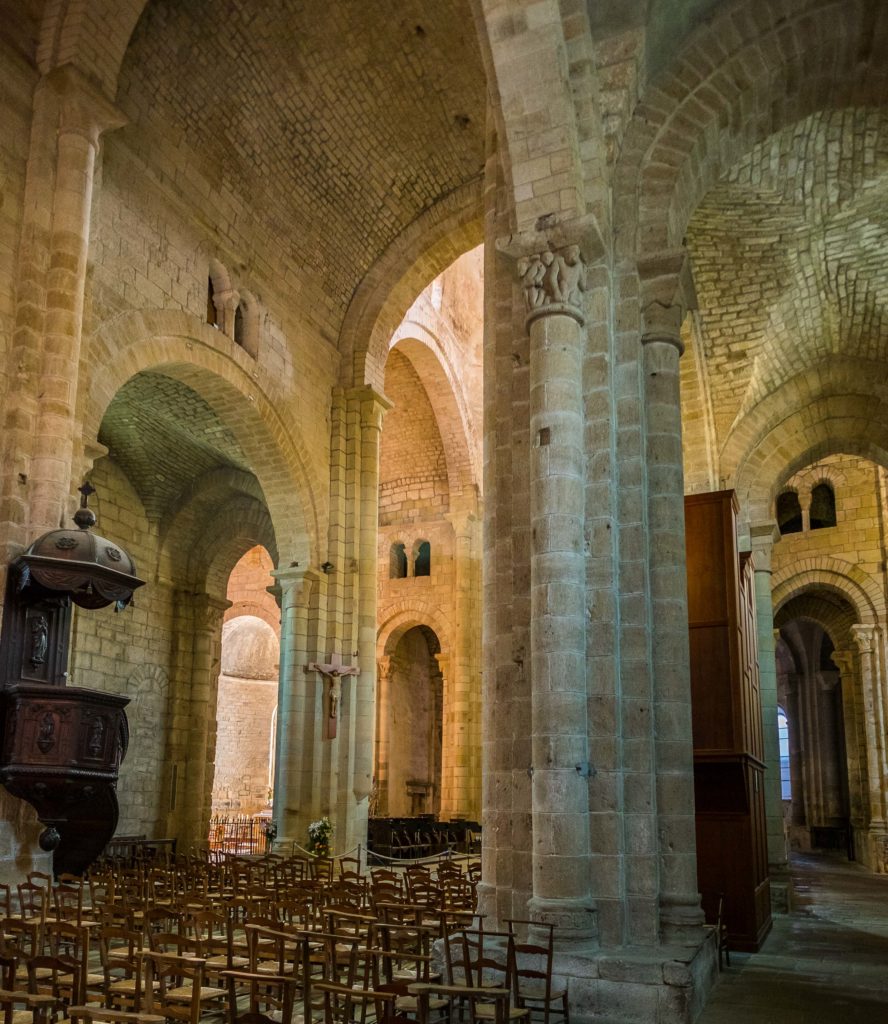
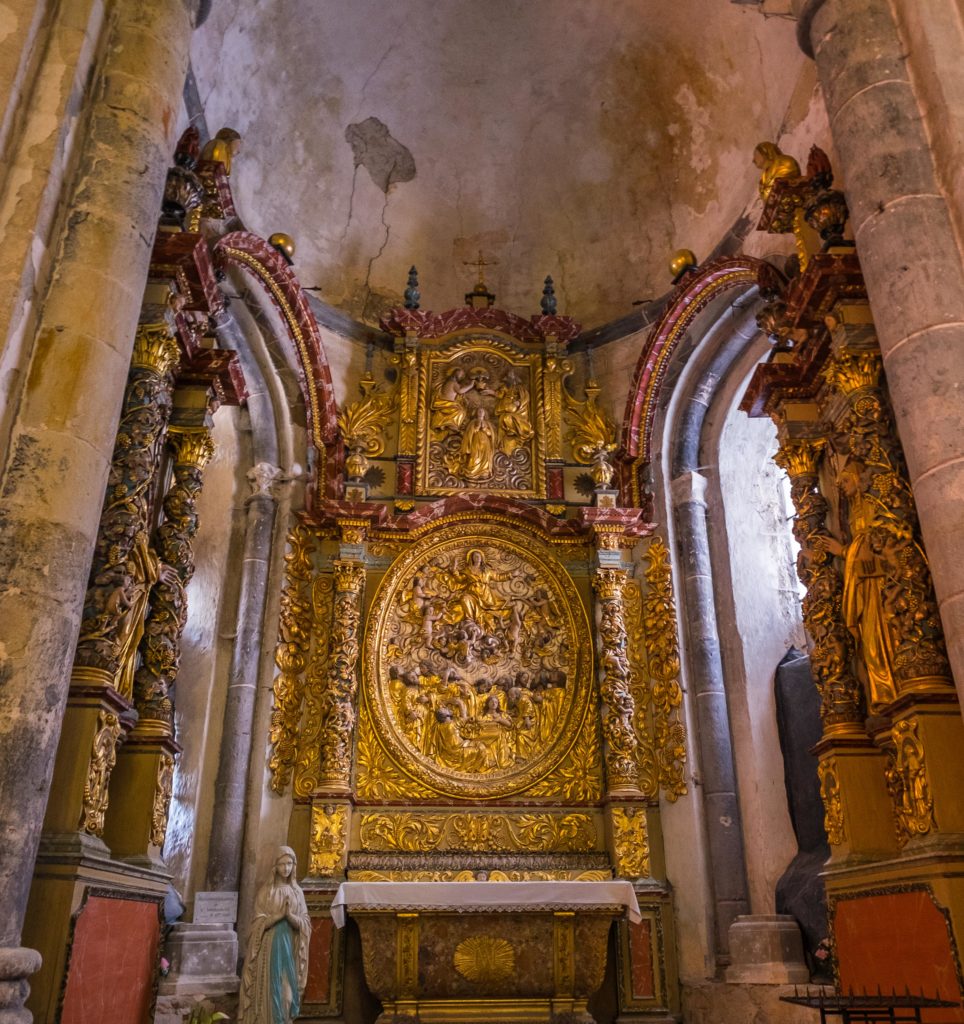
Before you leave, stop to look at the incredible detail in the tympanum over the door; it shows the 2nd Coming of Christ, surrounded by his 12 Apostles; as is often the case in medieval church art, I found the figures at the bottom (presumably the denizens of Hell whom Christ has risen above) even more interesting than the main subject!
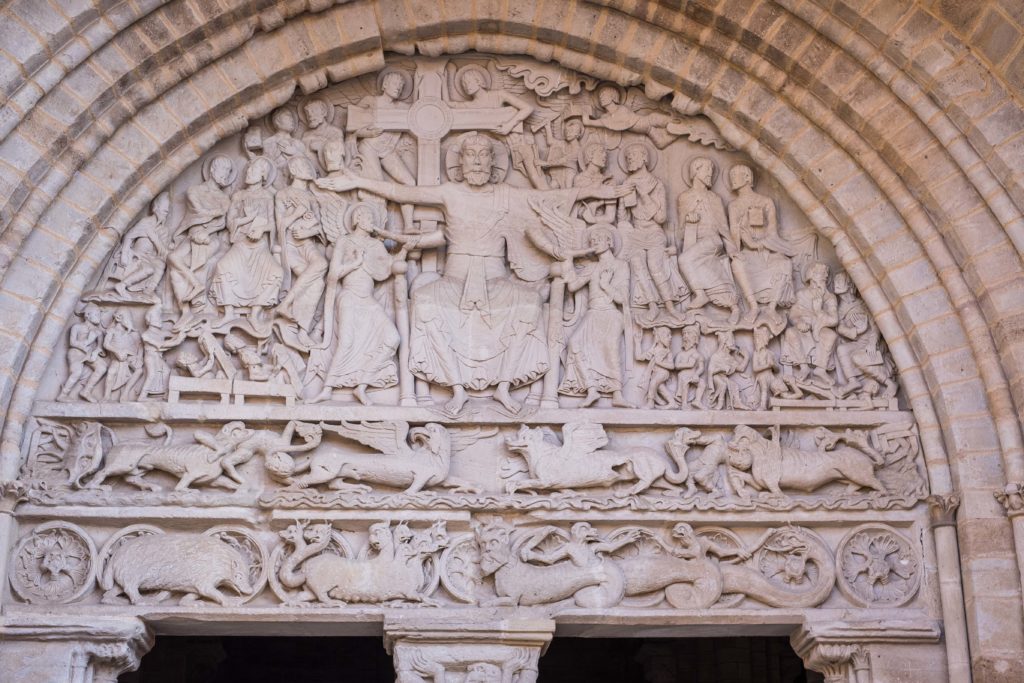
The medieval quarter surrounding the church is also worth seeing. Try to imagine the grand parties held in these Renaissance houses when Queen Catherine de Medici came to town in 1564 to introduce her son (King Charles IX) to his subjects. Let your mind wander to an era when fine tapestries and exotic sculptures decorated these towers.
And take a moment to ponder a most … unusual … interpretation of the story of Eve being tempted by the serpent in the Garden of Eden. In this version, the serpent has wrapped itself around Eve’s arms and legs in a way that seems almost sensuous, and…well, see what you think for yourself!
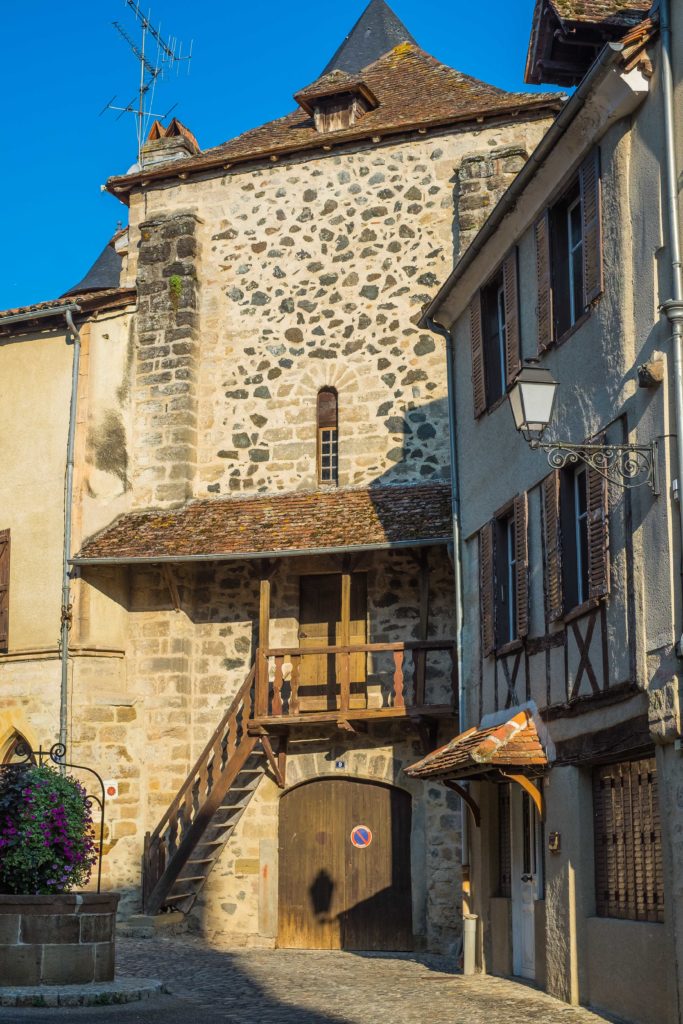
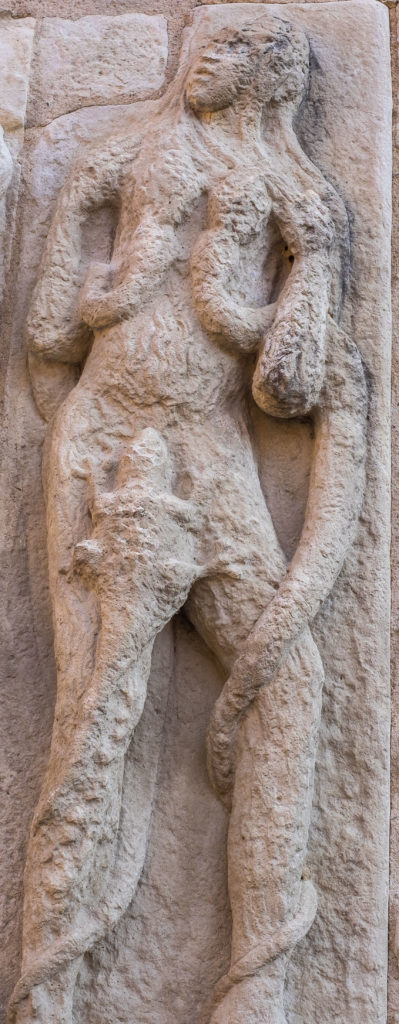
A region with an embarrassment of riches
It’s easy to find this “pretty place on the Dordogne” – Beaulieu is surrounded by many of my favorite places in the Corrèze, which is rapidly becoming one of my two favorite regions in all of France. Brive-la-Gaillarde (my base for this trip) is only 38 km from here, and the original “most beautiful village in France” is at Collonges-la-Rouge, only 15 minutes away.
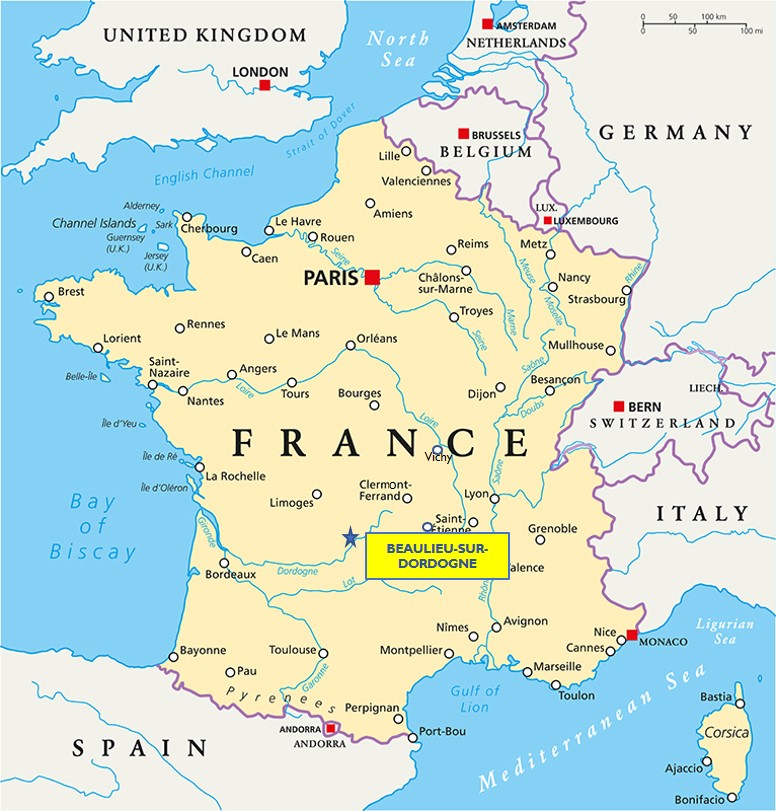
The great medieval center at Sarlat-le-Caneda is only about 90 minutes away (you can use it as the perfect base for exploring this whole region), and that means you’re also near the extraordinary Gardens of Marqueyssac, the prehistoric cave art at Lascaux, and a long list of other “Most Beautiful Villages”, including Castelnaud-la-Chapelle (my favorite!), Beynac-et-Cazenac, La Roque Gageac, Limeuil, Saint-Jean-de-Coly and Domme.
Do you have a favorite destination in the Corrèze – or somewhere else in the Deep Heart of France? What do you like to do when you’re here? Please share your experience in the comments section below – and take a second to share this post with someone else who loves traveling in France by using the button(s) for your preferred social-media platform(s).
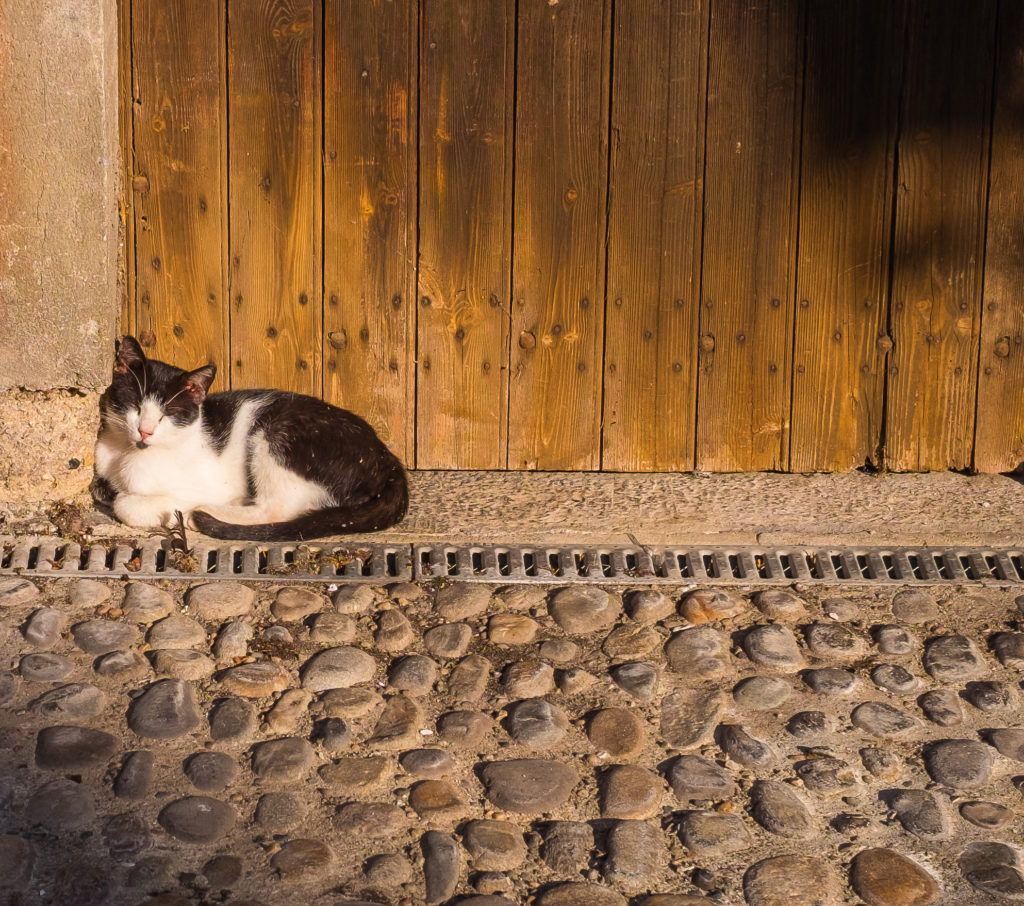
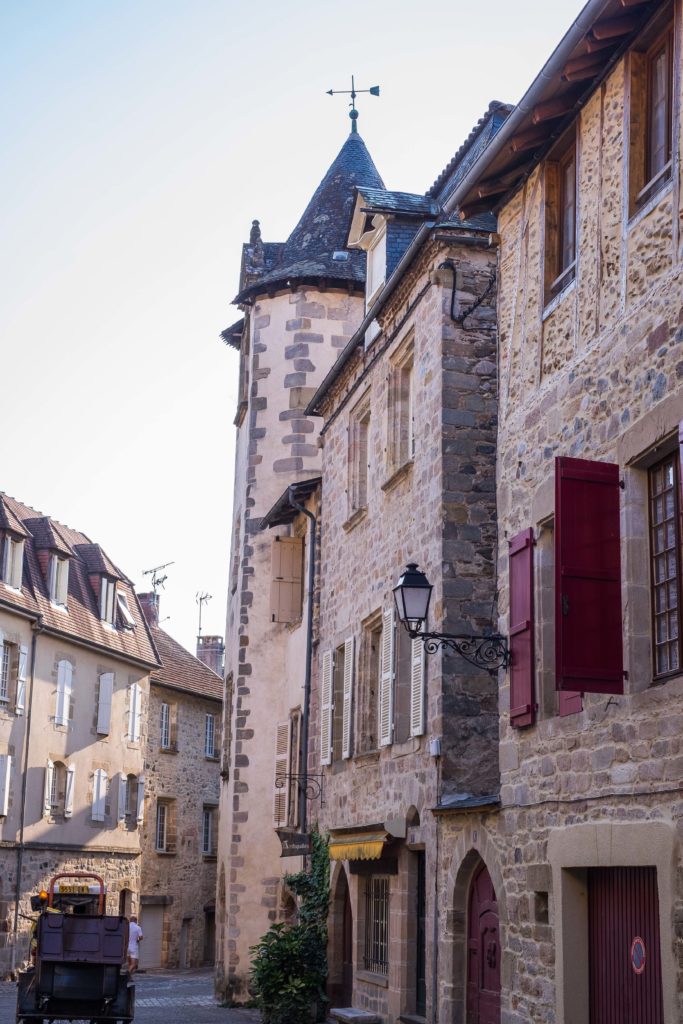
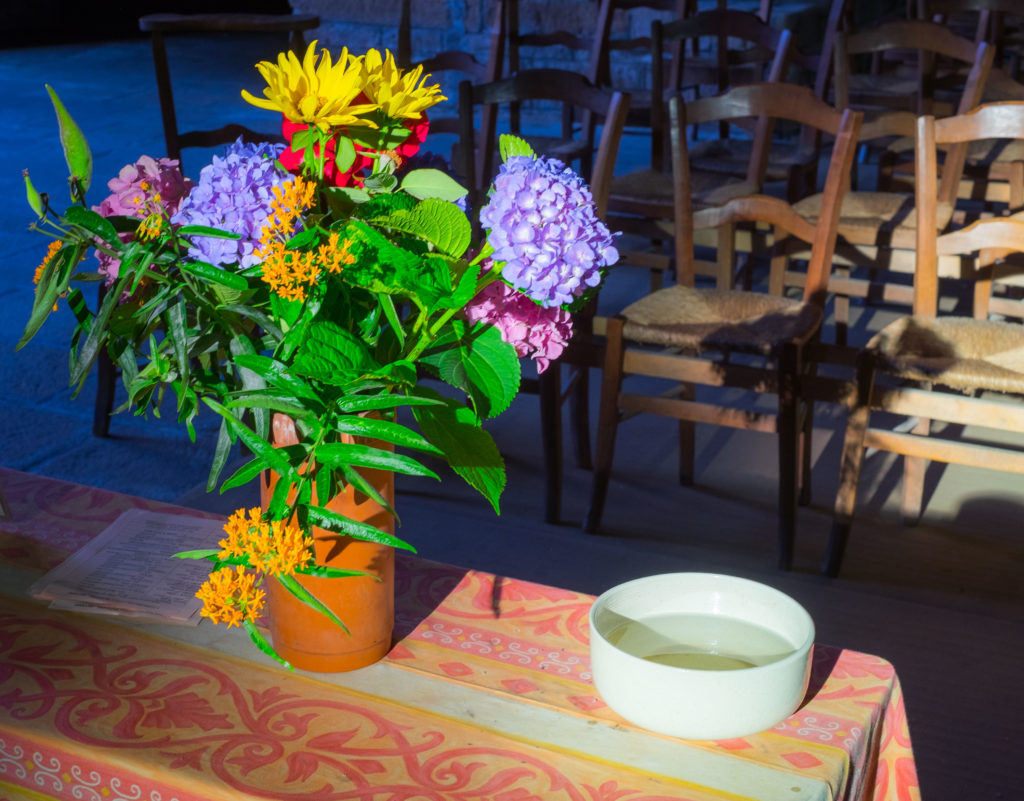
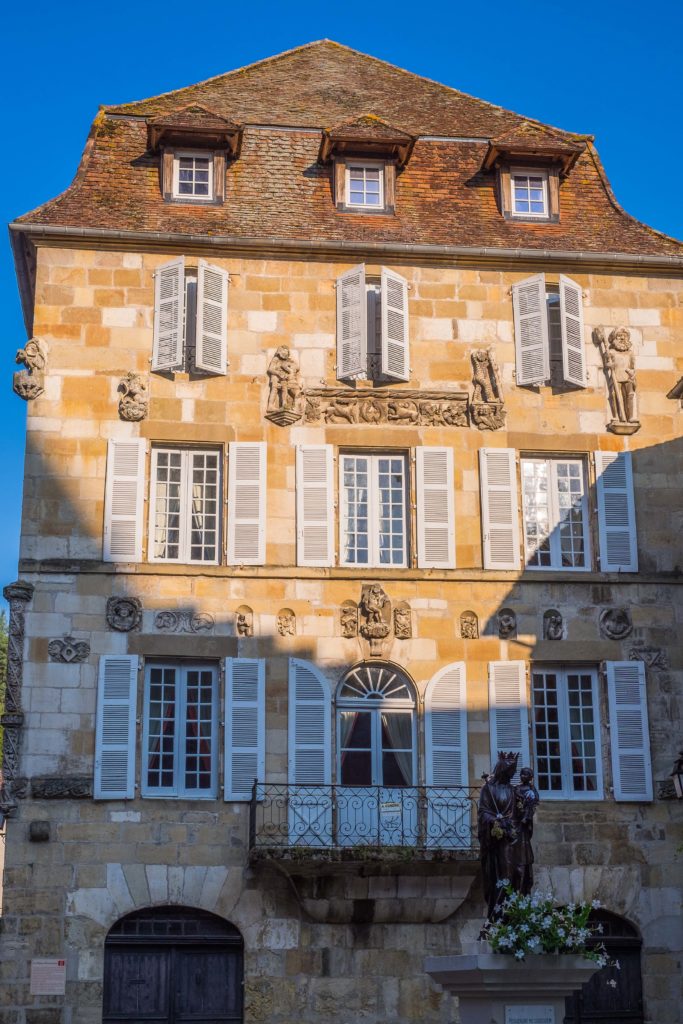
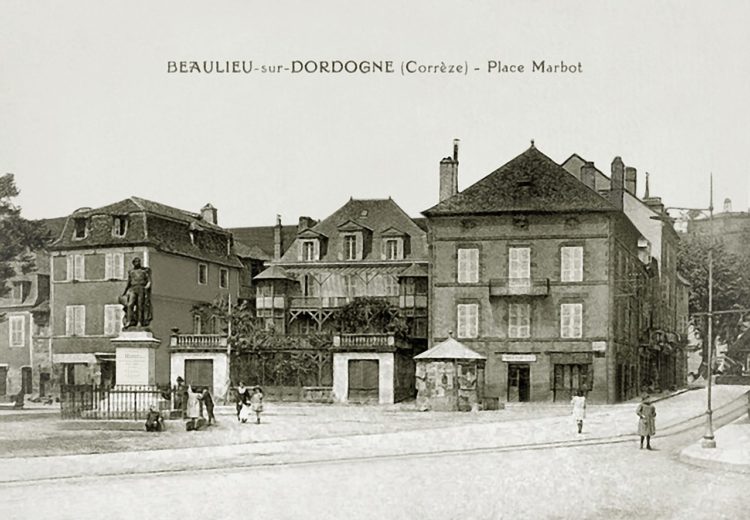

How many beautiful villages have you visited for goodness sake? Here is another good one for sure. I am interested to note how the echoes still resonate from 39-45 – I saw this around Lyon when I was a student there and there were still elder people who remembered. But that was 38 years ago.
Thanks, as always. It’s true that the “echoes” of World War II are fainter now as that generation is less present in French life- but there is still a definite impulse to remember what happened between 1939 and 1945. I’ve seen many other examples of plaques honoring the “juste parmi les nations” in my travels around central France, and you only have to walk through a cemetery like the one in Clermont-Ferrand to see how many people are remembered for fighting back against the German occupation. (It has to be said, though, that sometimes it’s clearly a “mixed” memory, since there are also occasional reminders of instances where French people collaborated rather than resisted. It makes for an uncomfortable dialogue in places like Vichy, where the monument to people deported to prison camps by the Vichy regime sits in a little corner, visibly apart from the grander monuments to France’s war dead. You get the impression that modern residents of Vichy would be happy to see that terrible period recede from the public memory.) I appreciate your comment!